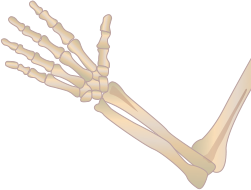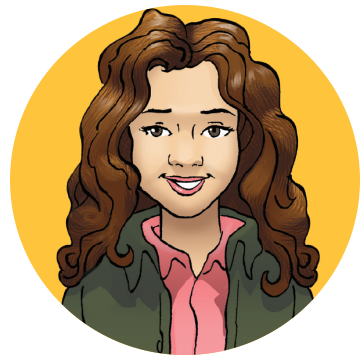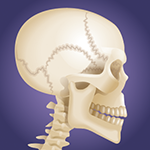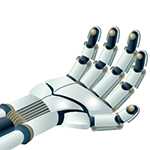Welcome to Science Expeditions Extras!
Dive deeper into your science kit’s theme and experiments. This month, learn a little extra about Bones.

Bones

Have you ever hit your “funny bone”—that weird spot near your elbow that stings and makes your arm feel numb when you whack it? Your funny bone isn’t actually a bone at all. It’s the ulnar nerve, which runs through the joint by your elbow. Some people think the funny bone got its name from the funny feeling you get when you hit it; other people think it comes from the name of the bone it’s near: the humerus. (Get it? Humorous?) Read, watch and learn more about bones and your experiments below.
Gather these household items from the list below before you begin your experiments. Check off items as you go or print the list here. All other materials are included in your kit.
Robotic Hand Model
ruler
scissors
Fun Facts
All the bones in the body are connected to another bone, except for one—the hyoid bone. The hyoid is located in the throat and helps attach the muscles of the mouth to the throat muscles.
The thighbone, or femur, is the longest bone in the body. The stapes in the middle ear is the shortest, measuring just around a tenth of an inch.
Over 90% of animal species on Earth, like insects and crustaceans, don’t have bones. They have an exoskeleton (a tough, protective outer shell), made of a protein called chitin.

Aunt Charlie’s Corner
Expert tips to complete this month’s science experiments!
 Model Skeleton
Model Skeleton
Watch this experiment!
- Use your experiment guide to help organize the different bone pieces before building your model.
- Use your experiment guide to help match the left and right pairs of each bone.
- The pegs of the bones are delicate. Handle them gently when connecting or disassembling the pieces.
- Remember:
- The ridged part of the vertebral column faces outward.
- The smaller pegs on the clavicles connect to the front of the ribs, while the larger pegs connect to the backs of the scapulae.
- The concave curves of the scapulae should face outward and away from the spine.
 Robotic Hand Model
Robotic Hand Model
- Follow the numbers on the hand punch-out and the sticker to help you match the hand bones correctly.
- Peel back the sticker pieces one at a time as you place the punch-out pieces on top. This will help preserve the stickiness of the sticker.
- Remember to cut the straw pieces slightly shorter than their respective phalanges. If they are too long, they will inhibit the fingers from bending at the joints.

